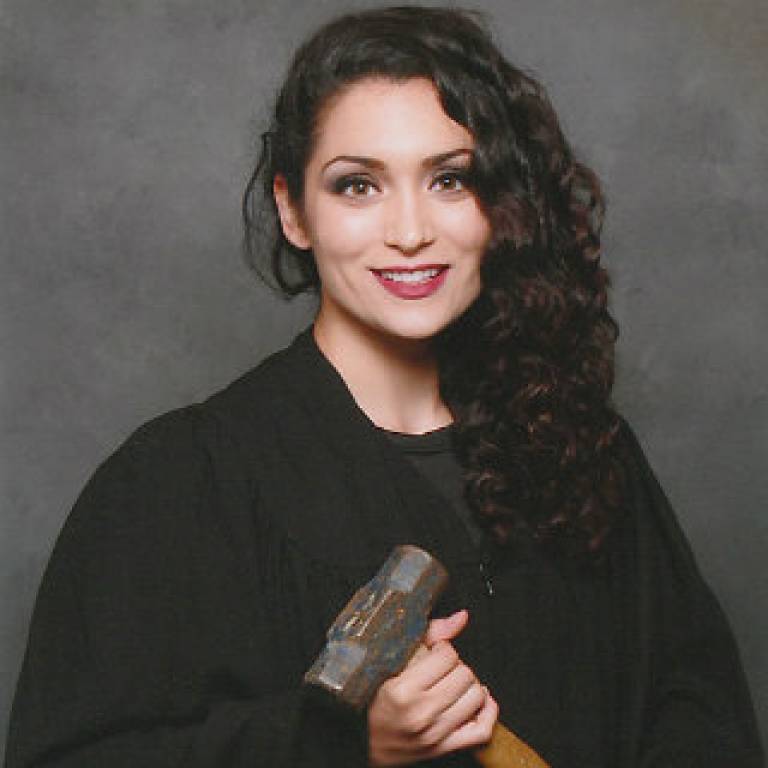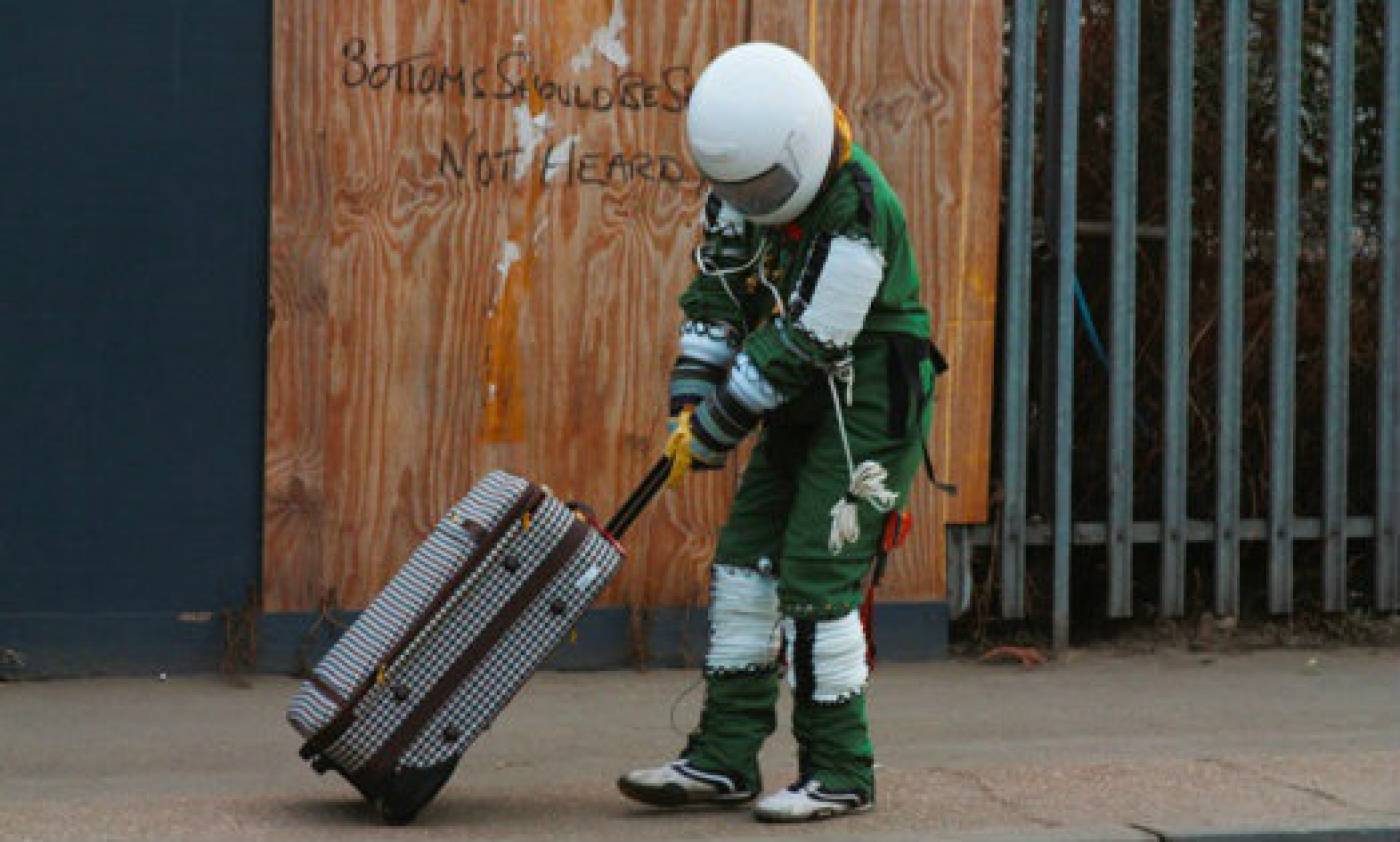Seven questions with Sarah Fortais
19 November 2015
This week we put seven questions to Sarah Fortais, a PhD student in Fine Art at the UCL Slade School of Fine Art.

Research project: Defining cool and understanding creativity through studio Practice
Department: UCL Slade School of Fine Art
Members of team: Sarah Fortais, Hayley Newman, Gary Stevens, Petra Lange-Berndt
Tell us more about your research project:
When
I showed up for my interview at the Slade, I was dressed in a replica Apollo
A5-L pressure suit that I built from found objects in London. I outlined that I
was interested in cool, as in, that desirable trait or characteristic that can
apply to both people and objects and that must be conferred by others.
The word
was coined in early American jazz circles but I believe its legacy continues on
either side of this historical moment and that trying to understand the
nomological network of constructs related to the perception of cool could be
key to approximating a working definition.
My research does not provide the
basis for cool to be systematically accessed for forecast but rather suggests
how cool may connect to a personal and cultural sense of value, potentially
becoming a model to help understand certain creative methodologies.

I also aim to explore creativity as a process and use my studio practice to structure and facilitate an experience of creative and cool-related processes. Three projects form the basis of my research:
1 2 3 (Unfinished) (2013-) is an ongoing
multi-stage project using 5 drum kits (and musician Ed Gorrod) to audibly
simulate a rocket launch and investigates research questions proposed prior to
the construction of each project stage.
It comes out of my research on cool as a value judgement and stresses that subtle differences in a person's perceived motivation (and not necessarily the person's real motivation) result in a viewer characterising their actions as copying, mimicking, recreating, or simulating. The project was created specifically to clarify how these terms work with and against cool; therefore my research leads this ongoing artwork.
Lunar Salon (2015) involved participants handling genuine moon rocks and other research materials such as a giraffe skull. It aims to combine my research on and the behaviour of cool in a way that doesn't betray the true nature of either. From my desire in my previous project to communicate clearly, I subsequently over-compensated for cool's purposeful obscurity (and even mutability) by forcing my art and research to serve as rational explanations for cool processes. To entertain both open communication and cool, Lunar Salon involved the physical presence of my research materials and artwork but with no imposed research agenda. The value of Lunar Salon to the research project thus only can become apparent through reflection after the event and is led by the artwork.
My
final project is building spacesuits for animals and will serve to communicate
and embody how I have come to define cool in terms of a creative methodology.
All my projects use bricolage as a method because bricolage focuses on the
process of constructing objects more than on the end result, which is in line
with investigating cool and creativity as active processes.
Part of my project involves creating a written account of how my studio practice, and specifically the handling of physical objects through bricolage, provides a structure that allows for multiple methodologies to be experienced and researched.
What makes it so important (and interesting)?
I am producing an interdisciplinary understanding of cool and recording a means of understanding creative methodologies.
What has been a personal highlight so far?
Getting a bull giraffe skull for the project was a big accomplishment. Also hearing 5 drummers perform the rocket launch was a proud moment.
Explain some of the challenges involved in working on a research project.
A lot of the time I find myself having to estimate the amount of time it's going to take me to compete something and then my progress is measured against this estimate.
It's problematic because most of what I am doing has never been done
before and so my estimates can be pretty far off the mark. Even though I've
gained experience over my two years at UCL, my projects are so varied that the
only thing I can more accurately estimate is the time it takes me to interact
with various UCL facilities, which is only a small part of my process.
One of my main challenges then, is figuring out a way to accurately communicate my research progress in a way that allows my supervisors and myself to evaluate if my methods are effective and the best use of my time.
Another challenge is much more straight forward - where do I keep a life-sized giraffe over the summer? It comes apart like Ikea furniture but the sheer mass of the thing makes finding a home for it problematic.
What advice would you give to an undergraduate student hoping to pursue a research career?
It's important to have academic relationships with people that have nothing to do with your research interest, because further down the line, lateral connections will become some of the main sources of inspiration for your project development.
Any idea what's next after the project finishes?
I
have designs for more spacesuits for animals - for instance an ostrich - and I
will be showing and performing my three projects in various contexts.
I also plan
on publishing my research and will be looking to continue teaching at the
university level as I create more work. One question in particular that I would
like to research more fully after my PhD is: is there an inherent aesthetic to
skill, as in, is there a physical trace left when extremely skilled individuals
use objects that is notably different from an average user or layman?
At the
Olympic Park Spark Festival which
took place in August 2015, Ed Gorrod and I began an experiment which involves
us drumming on separate canvases with sticks which leave a charcoal mark on the
surface.
Our initial results were promising - it was immediately evident from looking at the canvases that Ed was the experienced drummer and I was the first-time player. I would like to take this further and look at the object wear created by other professionals and tie this back into my research about cool.
Describe your perfect evening (or weekend) after a long week.
I don't think it's physically possible for me to stop making things, so even though I'd be taking a break from my research, I'd be taxidermying something (right now it's chicks and I'm making little Santa hats for them), or making clothing, or beadworK.
I'd also use my time to skype my family back in Canada and see what my mad-scientist brother (physics researcher in Hamilton, ON) is up to.
 Close
Close

